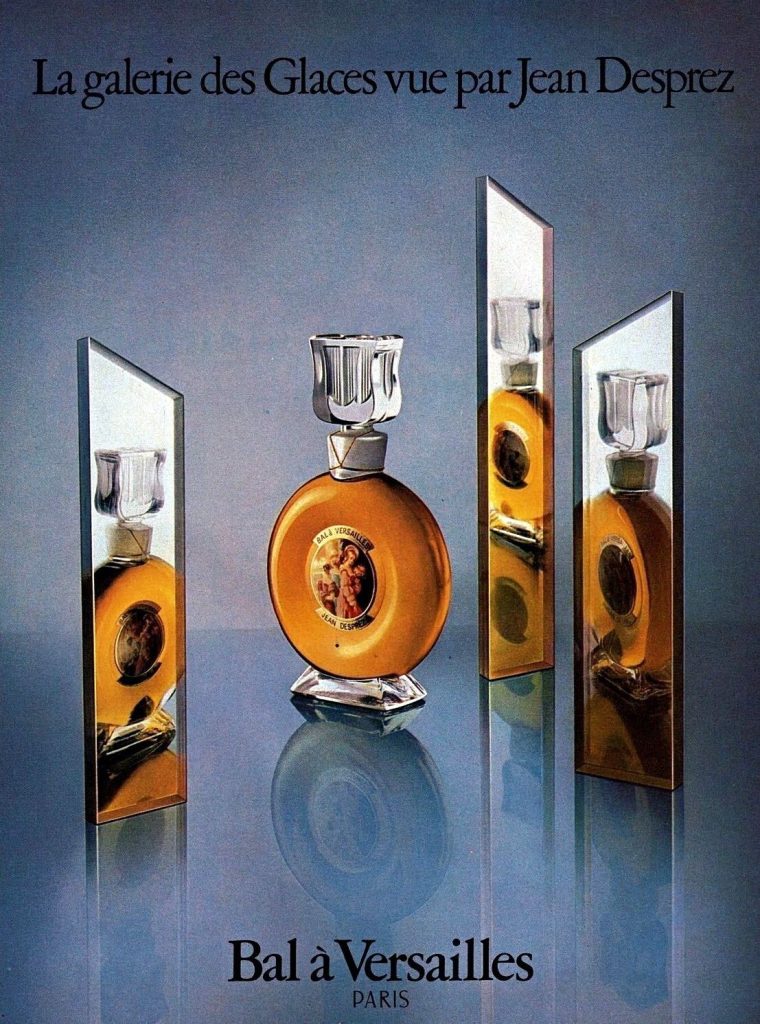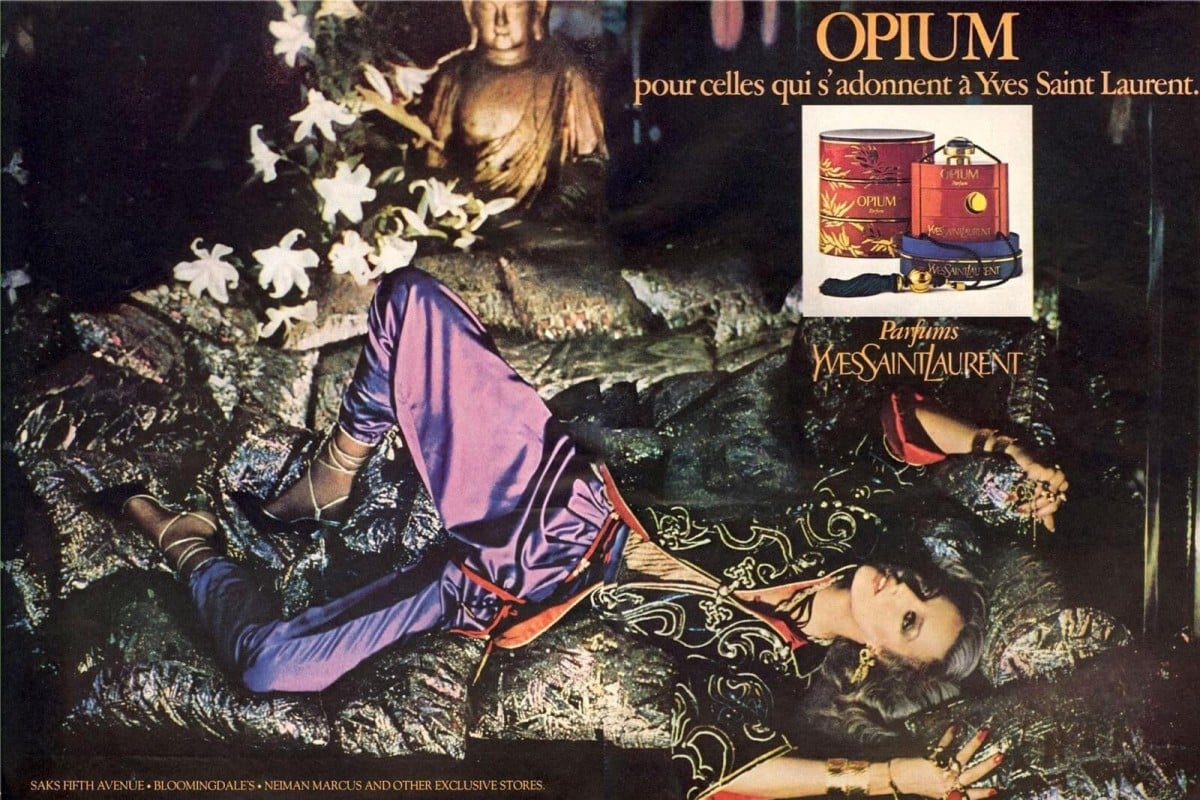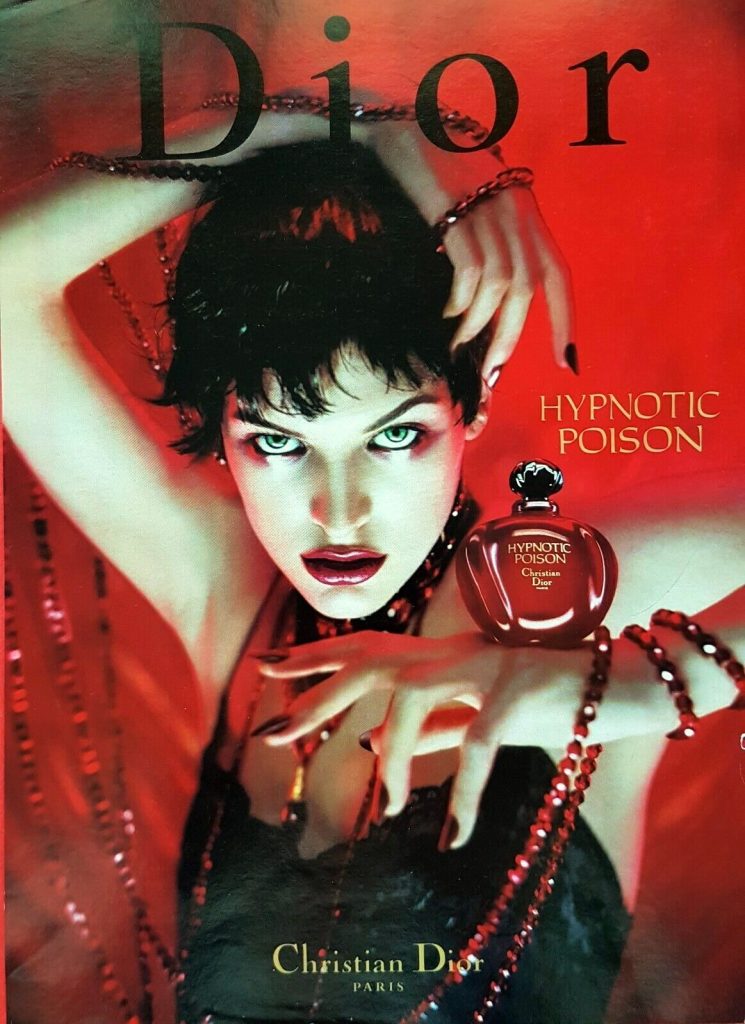
Unlike other hues on the colour wheel, red, in the context of a perfume, has been calibrated to full accuracy, faded to a whisper or saturated to its maximum, depending on the times.
In context to the use of other popular colours such as blue (perpetually aquatic—think Pierre Cardin’s Bleu Marine Pour Lui, launched in 1986), green (perennially woody, like Chanel’s 1926 scent Bois des Îles) and pink (persistently rosy, like when the Berbers first used the rose in their fragrances), the fiery shade has always been distilled down to a scent that mimics the times; almost like olfactory art that mimics life.
The first recorded perfume of this shade that entered the mainstream was Auguste Michel’s Krasnaya Moskva (Red Moscow), which was launched in 1927 in Russia, just as the country crawled out of a post-revolution civil war that incited famine and economic disaster.
To put beauty back into the lives of women, Michel bottled an alluring bouquet of florals including orange blossom, red carnation and iris, housed in a bottle reminiscent of Art Nouveau sophistication.
ALSO READ: Zendaya’s Stylist Low Roach Announces Retirement From Industry’s ‘Politics’ And ‘Lies‘
Women of the time were nostalgic for a more gilded era, fuelling its popularity from the Soviet Union to the Eastern Bloc. It further gained worldwide favour when it received an award at the World Exhibition in Brussels in 1958.
Almost a century later, Red Moscow remains as beloved as ever—with the original 1927 version, thought of as the holy grail of perfumes, still being sought after by fragrance fanatics today, proving its deep emotional connection with women through the ages.

Photo Credit: Cleopatra’s Boudoir
In 1962, Jean Desprez’s Bal à Versailles painted the colour in a different shade. In a stroke of kismet, its launch coincided with the United States Food and Drug Administration’s approval of the pill, and its scent—so outrageously sexual with its overdose of civet, and erotically teasing with its blend of amber, resin and musk—ushered in an age of liberation from society’s expectations of how a woman should behave or smell.
ALSO READ: Sorn: It’s Time For Me to Grow Up

Photo Credit: Yesterday’s Perfume
Amidst a traumatic economic decade of unemployment and inflation, Yves Saint Laurent’s introduction of Opium in 1977 fired up the crimson shade to paint a picture of individualism; a spillover concept of freedom derived from the 1960s.
Despite the narcotic associations of its lurid moniker (in reality, it smelled like spiced fruit tea punch made with rum and laced with incense), Opium became a vessel that allowed women to exhibit themselves, much like the glamorous women in its advertisements—which included Jerry Hall, Linda Evangelista and Kate Moss.
ALSO READ: The Benefits Of Buying Custom Jewellery

Photo Credit: Cleopatra’s Boudoir
This attitude carried on into the launch of Dior’s Hypnotic Poison in 1998, which the brand marketed as having “four contrasting facets” to match the women of its era.
The facets of Hypnotic Poison might have smelled like levity and sweetness on paper, but the perfume empowered women to live the many lives they chose with ease, as its longevity stretched from morning to night with just one spritz.
Within the past 20 years, the colour has been continually desaturated and resaturated by the industry’s premier noses. Think of the nearly pink, twee girlishness reflected in Valentino’s V Absolu (2005), which represented the Manic Pixie Dream Girl archetype popularised on Tumblr, and the unabashedly opulent Baccarat Rouge 540 by Maison Francis Kurkdjian (2015), which coincided with the world’s craving for bigger and brighter things regardless of price.
So what can one make of red perfumes in 2023? The answer is that once again, the fragrances reflect the times we live in. The new crop of red fragrances is democratic, allowing a woman to speak for herself and enhancing her beauty while projecting her individuality.
